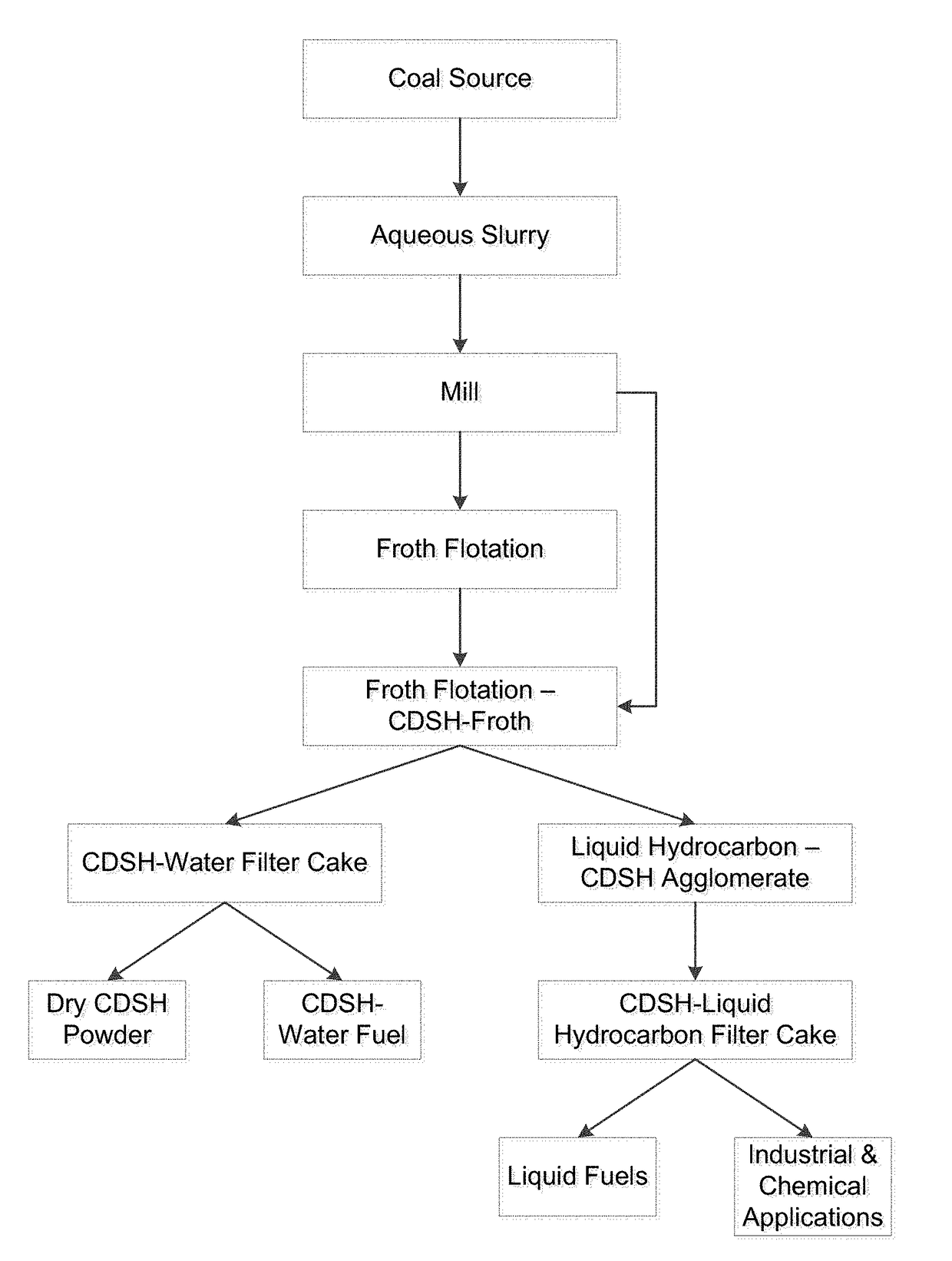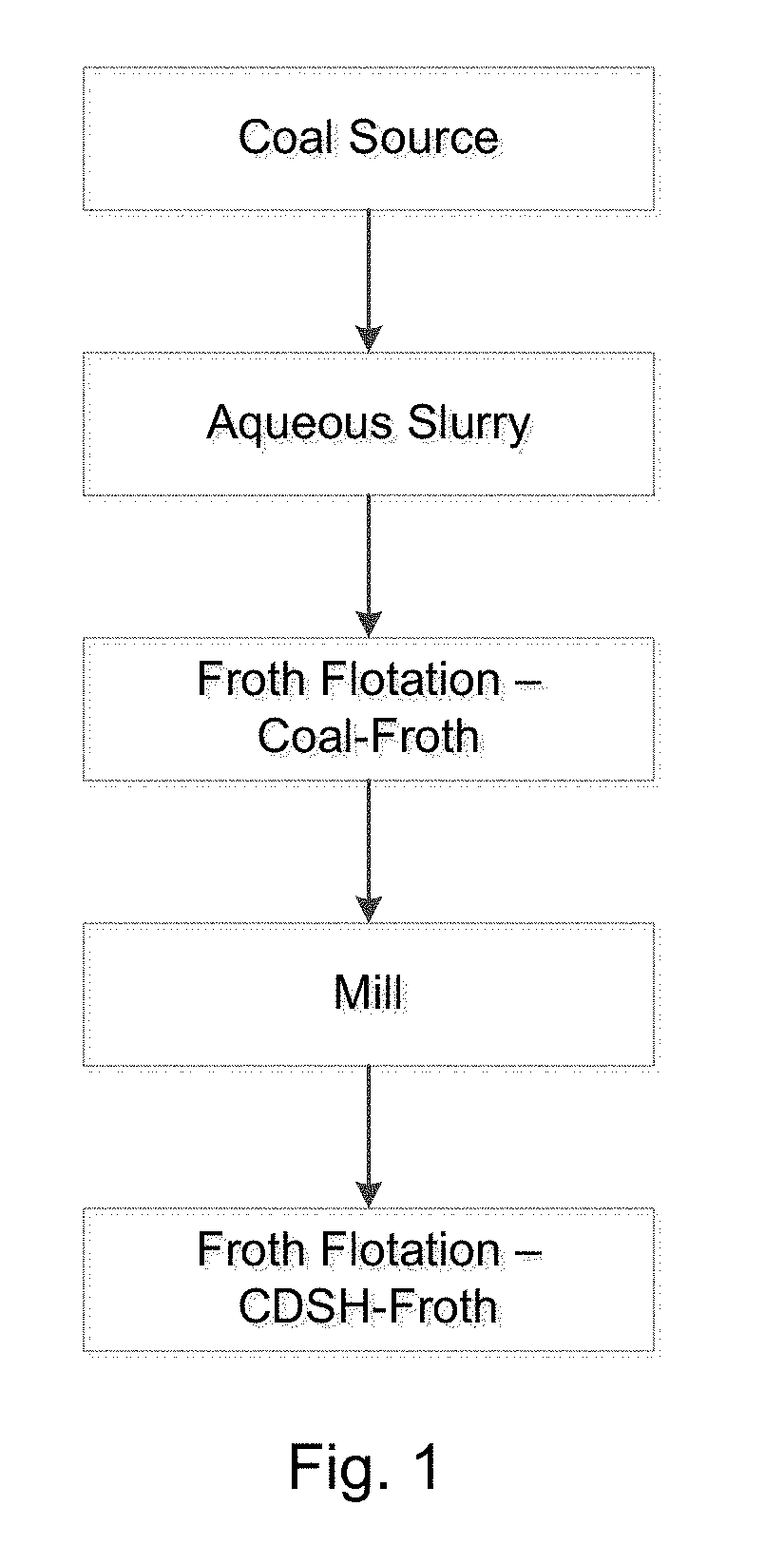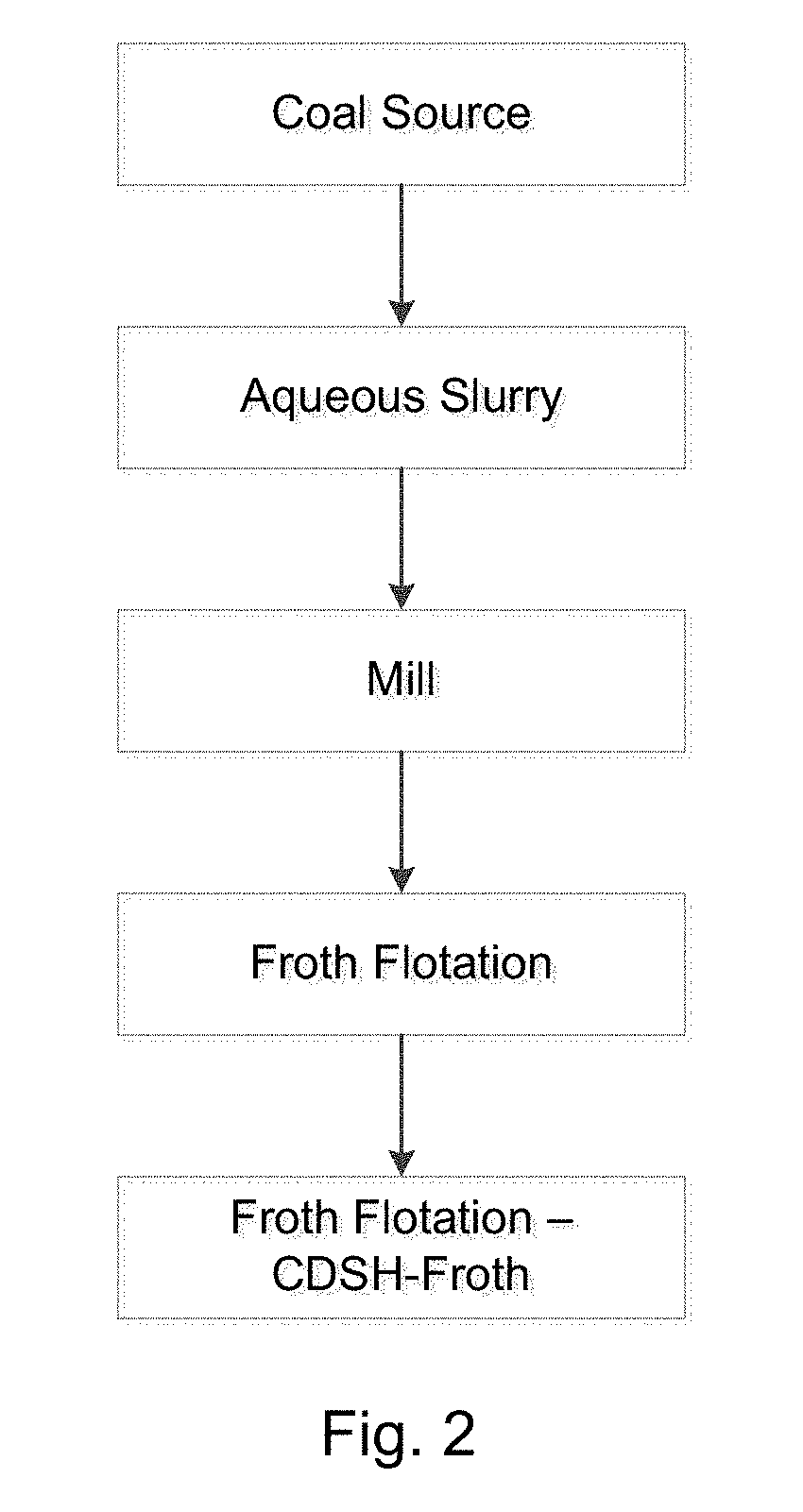Coal-derived solid hydrocarbon particles
a solid hydrocarbon and coal technology, applied in the field of coal-derived solid hydrocarbon particles, can solve the problems of increasing the cost of coal processing, increasing the cost of processing, and no current commercial process to recover and sell particles, so as to reduce particle agglomeration and inhibit the oxidation of the carbonaceous matter matrix
- Summary
- Abstract
- Description
- Claims
- Application Information
AI Technical Summary
Benefits of technology
Problems solved by technology
Method used
Image
Examples
example 1
[0059]As illustrated in FIG. 1, an aqueous slurry of coal-derived solids, which may originate from any coal source, was obtained. The aqueous slurry comprised discrete particles of composite coal composed of a solid carbonaceous matter matrix and inherent mineral matter in the carbonaceous matter matrix, discrete particles of coal-derived mineral matter, and a quantity of water. The slurry containing approximately fifty weight percentage (wt. %) solid particles was introduced into a high shear mixer.
[0060]The slurry was then discharged over a 300 micrometer (μm) screen on an orbital sieve. The underflow from the 300 μm screen was introduced into a coal-froth flotation cell where particles of composite coal were separated from particles of coal-derived mineral matter by froth flotation separation. Composite coal particles attached to fine bubbles in the water-bubble region, often called the pulp of the flotation cell. The buoyancy force of the bubble lifted the bubble and composite c...
example 2
[0065]As an alternative to the process described in Example 1, and as illustrated in FIG. 2, prior to the first froth flotation, the entire aqueous slurry of coal-derived solids, at about 50 wt. % solids, was milled to less than 20 microns with an average particle size between about 2 microns to 4 microns. This milled slurry was then introduced into a froth flotation cell. The froth produced was then floated again in a second flotation step, similar to Example 1. The first flotation removed the bulk of the free coal-derived mineral matter. However, some of the free coal-derived mineral matter was communicated to the first froth in the water. The reason for this is that the source of the water in the froth is the water in the pulp of the flotation cell. The pulp of the flotation cell also contains the hydrophilic coal-derived mineral matter in suspension. As water is included in the froth phase, so is coal-derived mineral matter in that water. The second flotation served to largely r...
example 3
[0069]As an alternative to the process described in Examples 1 and 2, and as illustrated in FIG. 3, prior to the first flotation, the entire aqueous slurry of coal-derived solids was milled to less than 10 microns with an average size of about 2 microns. This milled slurry was then introduced into a froth flotation cell. In this case, the solids content in the pulp was continually diluted to less than 4 wt. % solids to minimize the free coal-derived mineral matter available for entrainment in the froth being produced. The coal-derived mineral matter content of the froth was 1.08 wt. % on a dry basis. Further, counter-current wash water was dripped over the CDSH-froth. The CDSH-froth with counter current wash water contained 0.46 wt. % coal-derived mineral matter particles on a dry basis.
[0070]In this example, coal-derived solid hydrocarbon can be produced by first milling the slurry such that all particles are less than 10 microns with an average size of about 2 micron. By maintaini...
PUM
| Property | Measurement | Unit |
|---|---|---|
| particle size | aaaaa | aaaaa |
| particle size | aaaaa | aaaaa |
| particle size | aaaaa | aaaaa |
Abstract
Description
Claims
Application Information
 Login to View More
Login to View More - R&D
- Intellectual Property
- Life Sciences
- Materials
- Tech Scout
- Unparalleled Data Quality
- Higher Quality Content
- 60% Fewer Hallucinations
Browse by: Latest US Patents, China's latest patents, Technical Efficacy Thesaurus, Application Domain, Technology Topic, Popular Technical Reports.
© 2025 PatSnap. All rights reserved.Legal|Privacy policy|Modern Slavery Act Transparency Statement|Sitemap|About US| Contact US: help@patsnap.com



